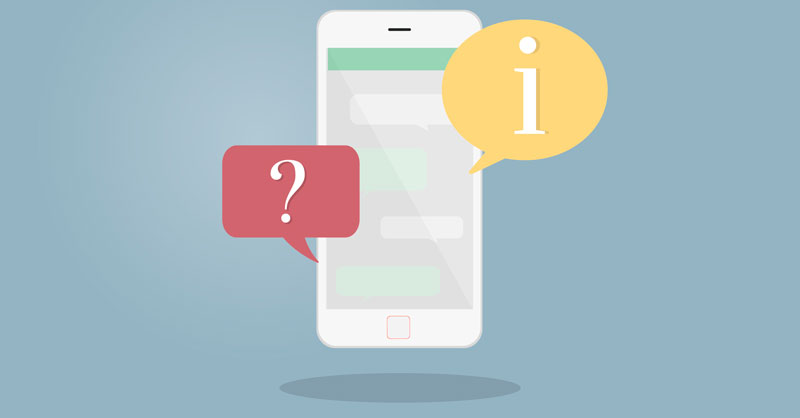If you’re thinking of working with digital marketing, you need to make sure that you develop the right skill-set and SMS Marketing is one of the top skills you will need. If you’re just joining, make sure to check out the other parts of the series (links will be updated as the articles come out):
- Graphic Design
- Social Media Marketing
- E-Mail Marketing
- SMS Marketing
- Web Design
- Using CRMs (coming soon)
- Google Analytics (coming soon)
SMS Marketing
What’s the first thing that comes to mind when I say “SMS Marketing”? Probably words like “Spam”, “Scam” and “Annoying” come to mind. You’re not wrong, due to its relatively low cost, how easy it is to obtain an excel sheet with a lot of numbers to send to, the simplicity of sending bulk SMS and just how stupidly easy it is to fake the sender ID, SMS has a bad reputation. I get it, I really do, but that doesn’t mean SMS marketing can’t be used for good, to engage and delight your existing customers, as well as attract new ones.
Here are some good examples of SMS marketing:
- Transactional messages meant to inform customers of a relevant change or update. Think of One-Time Passwords, messages from your bank after a purchase, package shipping updates, etc. You might think this isn’t really marketing, but it is. If done right, these types of messages can instill an idea in your customers’ minds that you are transparent, you care that they are informed and up-to-date on the things that they care about. Apart from that, you can always add some small and relevant promotion at the end of that message, too.
Imagine that you’re waiting for a package from FedEx/DHL/*Insert Delivery Company Here* that was sent to you from Germany. You get an SMS from that company saying that your package is on the way, but at the end of the message, they also share their special offer for packages from Germany? You’re now up-to-date on your package, and you also know that the next time you want to send/receive something to/from Germany, you can make use of that special offer. Neat, right? - You go to a bookstore and you sign up for a membership to use their members discount. After signing up (with your mobile number included, of course), you get a SMS thanking you for becoming a member. If the bookstore also took your literary interests, they can now send you relevant updates on the topics you are interested in. Instead of receiving offers for books on meditation (which is of no interest to you), you will receive offers for science fiction books (which is what you said you like reading).
When done right, SMS can be a great tool for marketers, but you have to make sure you’re not ignorant of the perception of that channel and need to apply your marketing and storytelling skills to attract, inform and delight your customers with it.

The data
I had a bit of hard time finding the original sources of some of these numbers, and to be honest, some are quite old, but I doubt that the data says the state of SMS is worse than before. I expect that even more people use SMS today, especially considering how long our eyes and attention is pointed at our little glass screens. This data was collected by SlickText in 2018, and I expect the data to be even older. If you find some more recent data, feel free to share it with me!
1. 5 billion people globally send and receive SMS messages. That’s about 65% of the world’s population.
2. 292 million people in North America use text messages — that’s 80% of the total population.
3. The country with the highest percentage of mobile users is Russia where 89% of the population sends and receives text messages.
4. China and India have the most people who send SMS messages — China comes first with 1,081 million people and India second with 730 million.
5. The mobile industry had a revenue of $1.05 trillion in 2017. That’s a 1.64% annual increase.
6. 3.3 billion people access the internet via mobile. It’s predicted that by 2025, 72.6% of internet users will access the web via mobile only, using their smartphones.
7. Most people are using smartphones nowadays — 57% of mobile users own a smartphone. In 2020, 3.5 billion people are expected to own a smartphone.
What you need to know
Very similar to my article on E-mail Marketing, it really boils down to these 3 things: Consent, Frequency and Relevancy. I suggest that you go and read that article for more on this, but I will summarize it here:
- Consent
Make sure your customers KNOW that you will send them messages and respect their wish to no longer receive them. - Frequency
If you send too many SMS’s, your customers will start ignoring them, they will become part of the background noise of the spammy messages. Even worse, you might get blocked and reported for spamming. Make sure your messages are timely and only as frequent as they have to be. You can even ask your customers how often they’d like to hear from you - Relevancy
Don’t send the wrong message to the wrong people. A teenager will not be interested in a home loan, just as much as a businessman in Canada will not be interested in buying an internet package in Australia.
Where to learn
The main things you’ll need to learn are how to use SMS sending tools, how to integrate those systems with your internal systems in order to automate the transactional messages and how to be able to manually send marketing SMS. The latter is quite an easy task, but learning how to integrate your systems really depends on what kinds of systems you use, what level of complexity you expect and a few other factors.
